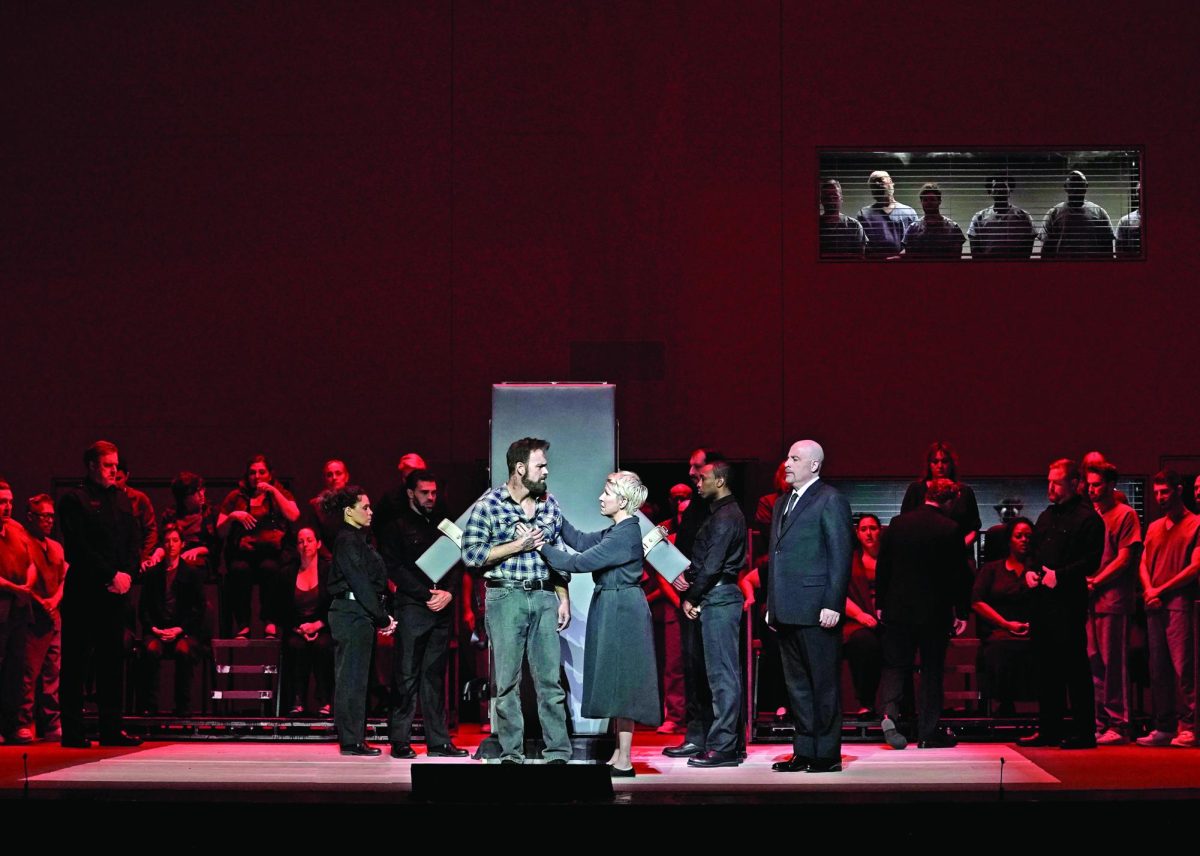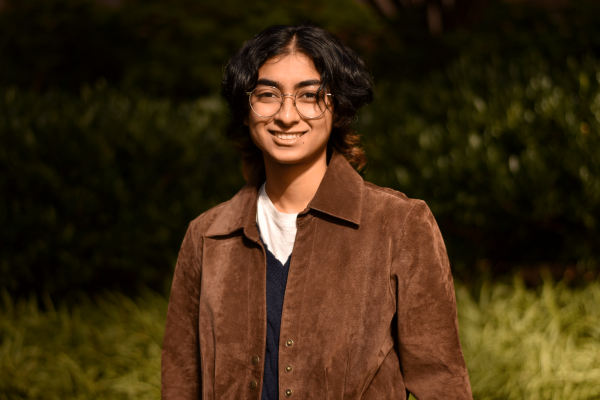Content warning: This article contains mentions of sexual assault in describing the plot of “Dead Man Walking.”
“Dead Man Walking,” the most widely produced opera of the 21st century, opened the Metropolitan Opera’s 2023-24 season on Sept. 26 and tells a profound story of forgiveness and love within the system of capital punishment.
Joseph De Rocher (Ryan McKinny), an inmate on death row in the high-profile Angola State Penitentiary, laments that 17 minutes is “how long it takes to decide whether a man should live or die.” Convicted of rape and murder, De Rocher’s pithy comment encapsulates the brutality of the justice system: It only takes a few minutes to determine one’s, very permanent, fate.
Originally released as a memoir by Sister Helen Prejean in 1993, “Dead Man Walking” was adapted into a highly successful film in 1995, directed by Tim Robbins and starring Susan Sarandon as Sister Helen Prejean, before it was recently composed into an opera by Jake Heggie.
The story centers around the spiritual journey between Sister Helen (Joyce DiDonato) and a murder convict on death row, De Rocher.
With its creative use of shadows, the open, liminal spaces are turned into confines of human fears.
The operatic adaption raises no question of De Rocher’s guilt, beginning with him and his brother brutally raping and murdering two teenagers, a bold departure from the ambiguity of the film adaptation. By placing the murder upfront instead in contrast to the film’s storytelling technique: Revealing bits and pieces throughout the runtime, the narrative shifts from questioning De Rocher’s guilt to exploring the story of death, forgiveness and love at the center of Sister Helen’s novel.
The opera follows the deepening of Sister Helen’s relationship with De Rocher, while she serves as his spiritual adviser and concludes with the chilling scene of De Rocher’s execution.
In a controversial move, the production behind the opera chose to feature both of the pivotal scenes (the initial attack and rape of the teenagers and De Rocher’s execution) on-stage, rather than briefly referencing or alluding to the act.
According to the New York Classical Review, “McNally insisted that these traumatic events be depicted onstage, not just implied or referred to. This production handled the two dramatic bookends in radically different ways: the crime in a blurry night video to start the opera, with the teens and their attackers in a chaotic struggle ending in dimly-seen shooting and stabbing, and the killer’s execution in a brightly lit room, a slow, clinical process of lethal injection, videoed live and projected many times life size in excruciating closeup.”
While the story is explicitly about capital punishment, it also explores fundamental moral dilemmas, stretching beyond the labels of right and wrong, good and bad, nun and convict. It presents itself to be a story of two human beings — so seemingly different — coming together.
Sister Helen and De Rocher connect over faith, empathy and their admiration for Elvis Presley. Though the opera is centered around the heavy topic of capital punishment, it frequently utilizes witty humor (such as the Presley medley) to break up the tension. While this balance exists, the governing tone of the opera remains centered around themes of grief and the pain of losing one’s child — be that De Rocher’s mother or the families of the victims — as the characters navigate conflicting feelings about the morality of the execution.
DiDonato, a Mezzo soprano, was proclaimed by The New York Times to have a voice “nothing less than 24-carat gold” and that’s clearly no exaggeration. Her domineering and melancholic performance of Sister Helen moved both the audience and De Rocher toward vulnerability, empathy and ultimately, forgiveness.
De Rocher showed an intimidating, yet charismatic personality through McKinny, a bass baritone. His breathtaking performance and intense expressions portrayed De Rocher’s humanity — not the monster other characters make him out to be — and made the process of forgiveness more attainable. Perhaps, however, the most impressive part of his performance was when did more than a dozen pushups with no wavering in his vocal performance.
While the story is explicitly about capital punishment, it also explores fundamental moral dilemmas, stretching beyond the labels of right and wrong.
The performance breaks many of the audience’s expectations coming into the show as the show is so much more than spirituality and the death penalty. For one, this is not an opera on missionary conversions or biblical teachings. In fact, the show has traditionally been performed with steel bars, dividers and shackles, but they have none of that at the Met Opera. The current set, however, is devoid of any objects (aside from the occasional prison bed or bench).
With its creative use of shadows, the open, liminal spaces are turned into confines of human fears. By using an institute-like set and clearly demarcated areas of movement, the audience isn’t distracted by the physical barriers between the two characters and is forced to focus on their emotional and spiritual connection.
One of the most unique elements of the opera was its use of live camera operators: recording the singers and projecting the video on a large screen. When Sister Helen first arrives at the prison, the camera uses live editing to blur the faces of the convicts and rapidly moves to create a jarring effect and dehumanize the prisoners. In other scenes, however, the camera zooms in crisply on De Rocher, showing just how human he is.
This signature technique of Ivo van Hove, Belgian theater director and producer of the Met Opera’s “Dead Man Walking,” was remarkably used to set the tone and dictate how the audience is supposed to perceive the characters.
As this was the dress rehearsal, the audience had the unique opportunity to see the music director Yannick Nézet-Séguin hand out real-time feedback and even stop the opera to redo a scene. Despite his critiques, the orchestra seemed nothing short of stellar and did a fantastic job of varying the tempo to match the emotions of the scenes.
Yet, the most impactful scene was when there was no sound at all — the scene of the execution. As De Rocher lay on his deathbed awaiting his lethal injection, only a deafening silence was to be heard. The live cameras crisply zoomed in on his face, and the realistic intensity of the scene held the entire hall in a harrowing paralysis. On stage, white light shined on De Rocher while those watching were bathed in red. Sister Helen stood at the edge.
The silence was finally interrupted by Sister Helen singing the same hymn with which she began her performance. The opera ends the same way it begins — from an awful illegal murder to a legal murder by the state.


